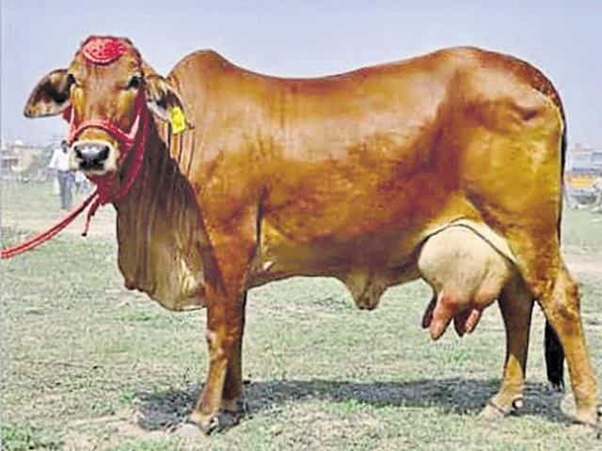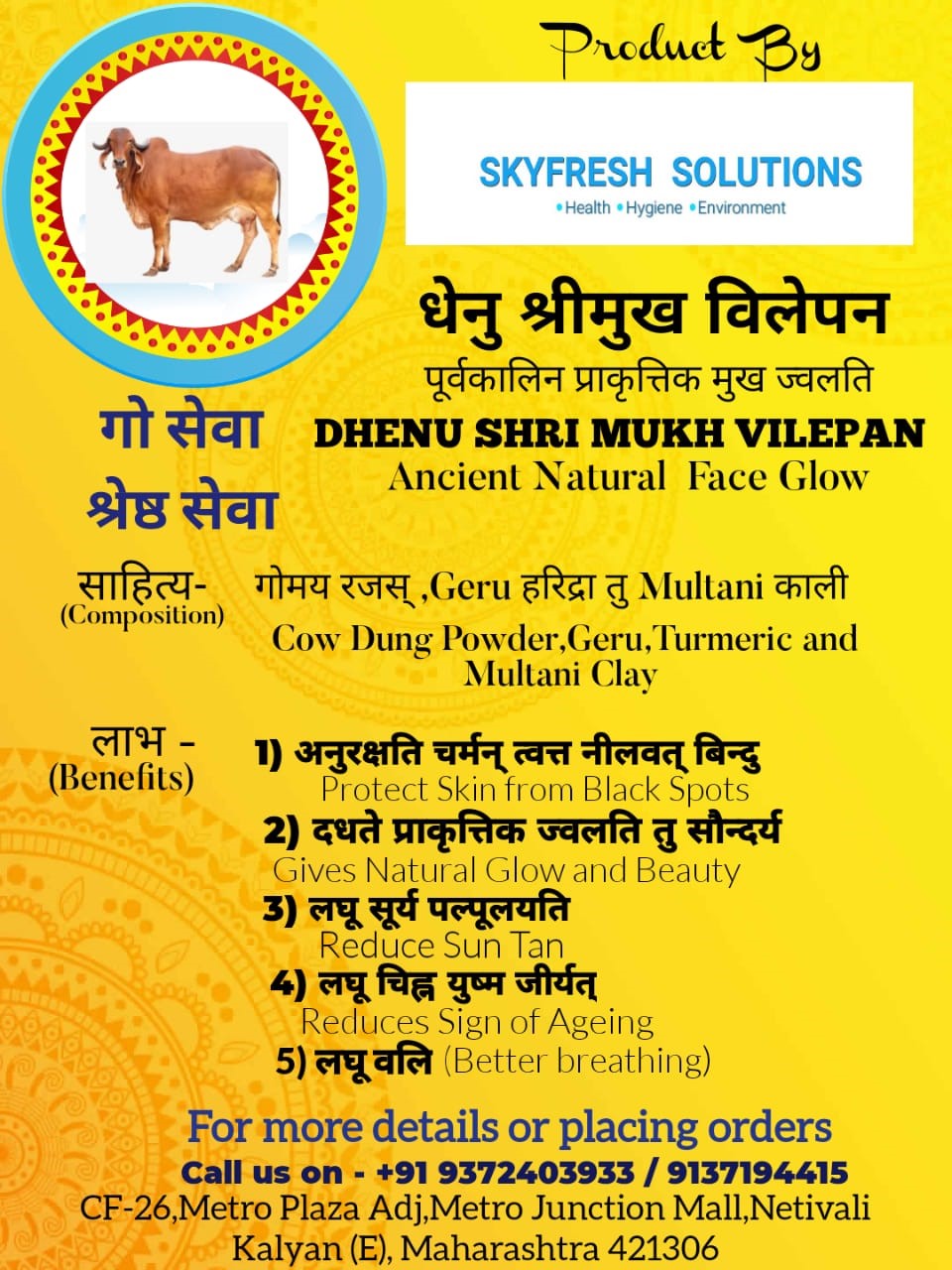Dhenu Products
Milk, for Indians, is not just another drink. It’s an elixir. Potent and emotional, milk is supposed to be the primary nutrient for the young and the old. 63% of animal protein diet for Indians comes from dairy products.
Desi Cows (Bos Indicus Cattle), sometimes known as humped cattle or Brahman cattle, are a type of domestic cattle originating in South Asia, particularly the Indian subcontinent. They are characterized by a fatty hump on their shoulders, drooping ears, and a large dewlap. They are highly adapted to high temperatures and are farmed throughout the tropical countries.
The hump of a desi cow has a specific vein called Surya Ketu Nadi (yogis know the nadis are channels in the etheric body), which absorbs the energy from the sun and moon. The solar rays produce golden salts in her blood and are present in the products produced (e.g. milk, ghee, curd, butter), thus giving its golden color. The other cow by-products (e.g. dung, urine) have medicinal benefits as well acting as naturally producing manure, pesticide, and insecticide
Traditionally It is also worshipped as the Panchgayva the Produce of Desi Cow has Medicinal Value and the 33 Koti God is Present in it as shown in the Picture

Few Best Cow Breeds Found in India
- Kathiyawadi/Gir/Gyr, Gujarat. ...
- Sahiwal, Haryana/Punjab. ...
- Tharparkar, Rajasthan. ...
- Red Sindhi, Rajasthan. ...
- Rathi, Rajasthan/Haryana. ...
- Kankrej, Gujarat/Rajasthan. ...
- Ongole, Andhra Pradesh.
And many More… few Pictures are shown Below

Indigenous breeds adjust productivity to adverse climatic conditions and availability of food. They are resistant to diseases peculiar to the region in which they have evolved. ‘Elite’ breeds, however, are productive only in ideal, disease-free conditions. In the long run, exotic breeds are economically not viable.
At the time of independence, India had 111 varieties of indigenous cows. Today, there are just 37 left. You ask why? The reason for this looming biodiversity tragedy is the government’s indiscriminate import of exotic crossbreeds from other countries. The foreign cows have put the native Indian varieties on the brink of extinction
Male cattle numbers in India have dipped from 101.60 million in 1992 to 67.92 million in 2012 and further to 46.61 million as per the 2019 Census, even while registering a rise for females from 102.99 million to 122.98 million and 144.68 million in these years
Traditionally, India has been home to some of the most varied stock of cows in the world: the red-skinned Sahiwal that milks through droughts, the mighty Amrit Mahal with swords for horns or the tiny Vechur that stand no taller than a dog. Different breeds to suit different climatic conditions. These cows have been the most crucial backbone of India’s rural economy. Low on maintenance costs, their milk yield has not only been a succor and source of nutrition for otherwise impoverished families, their surplus has been sold by small farmers to State-run cooperatives and private companies, which further package and sell them to urban households under brands such as Amul, Vijaya, Verka, Saras, Nestle and Britannia.


Dhenu Products
Composition:- Enriched with Natural Ingredients like Cow Dung, Multani Clay, Geru,Turmeric, Neem Oil, Til Oil,
Benefits:-
- No Foam
- For All Ages infant to Old
- Good For Skin Problems
- No Itching
- Free from Synthetic Fragrance & Color
Application Area:- Body & Face
Composition:- 100% Pure and Natural Made Using Ancient Vedic Bilona Method
Benefits:-
- Reducing Inflammation
- Rich Source of Vitamin A/D/E/k and Omega 3 & 6 Fatty Acids
- No Artificial Ingredients or Preservatives
- Helps in Digestion
- For Skin
Composition:- Cow Dung Powder,Camhor,Carom oil,clove oil,Nilgiri Oil,Fasting Salt and Alum
Benefits:-
- Remove Stains
- No Bad Breath
- Clean Gums Gently
- Remove Plaque
- Overall Dental Care
Composition:- Cow Dung Powder,Geru,Turmeric and Multani Clay
Benefits:-
- Protect Skin from Black Spots
- Gives Natural Glow and Beauty
- Reduce Sun Tan
- Reduces Sign of Ageing
- Reduces Wrinkles
Composition:- Cow Dung Powder,Ghrit,Raal Powder,Red Sandalwood powder,Camphor,Nagarmotha and Jatamasi Powder
Benefits:-
- Make atmosphere pleasant
- Helps in mind concentration
- Reduction of pathogens
- Air purification
- Better breathing